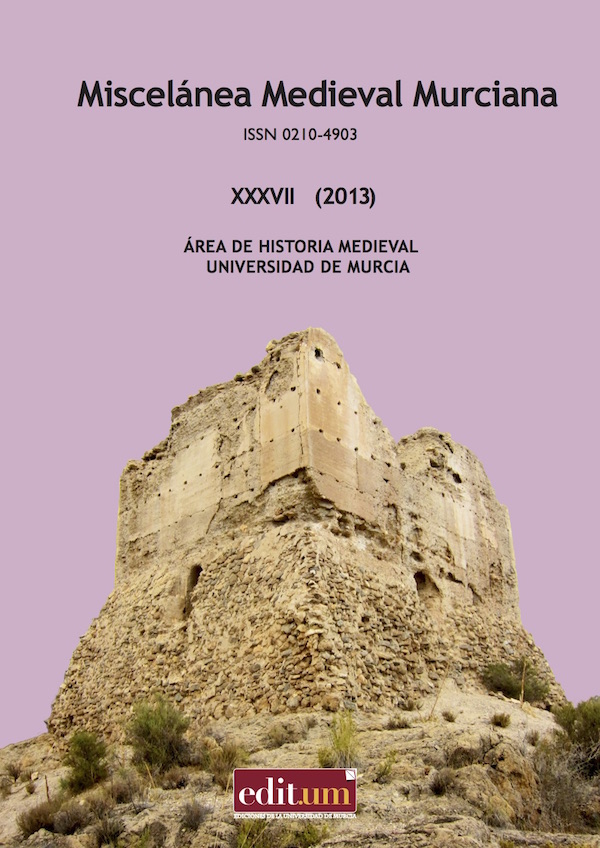La muralla medieval en el reino de Valencia a comienzos del Trescientos. Fiscalidad regia e identidad colectiva
Abstract
At the beginning of the 14th century, the intervention of the monarchy in the development of the valencian universitas took as a consequence the approval of a series of measures that strengthened the links between both spheres of power. Inside these links we emphasize the derivation of taxes paid for the cities and villages of the kingdom to destine them to the building and improvement of walls, which intensified the process of construction of the urban identity as group, but incorporating in turn elements of “privatization” of the above mentioned defensive systems. These factors can be studied in the kingdom of Valencia across the great number of privileges and of measures of grace established by Jaime II of Aragon to beginnings of the above mentioned century, documented across the record Gratiarum of the Archivo de la Corona de Aragon, which comparative analysis is the base of the present article. Thus, the construction or the maintenance of the walls would extend the meaning of these elements of protection in the cities of the kingdom, incorporating to his defensive capacity and of juridical delimiting, the possibility to establish links between diverse spheres of power and the contradiction between collective identity and particular needs.Downloads
Las obras que se publican en esta revista están sujetas a los siguientes términos:
1. El Servicio de Publicaciones de la Universidad de Murcia (la editorial) conserva los derechos patrimoniales (copyright) de las obras publicadas, y favorece y permite la reutilización de las mismas bajo la licencia de uso indicada en el punto 2.
2. Las obras se publican en la edición electrónica de la revista bajo una licencia Creative Commons Reconocimiento-NoComercial-SinObraDerivada 3.0 España (texto legal). Se pueden copiar, usar, difundir, transmitir y exponer públicamente, siempre que: i) se cite la autoría y la fuente original de su publicación (revista, editorial y URL de la obra); ii) no se usen para fines comerciales; iii) se mencione la existencia y especificaciones de esta licencia de uso.
3. Condiciones de auto-archivo. Se permite y se anima a los autores a difundir electrónicamente las versiones pre-print (versión antes de ser evaluada) y/o post-print (versión evaluada y aceptada para su publicación) de sus obras antes de su publicación, ya que favorece su circulación y difusión más temprana y con ello un posible aumento en su citación y alcance entre la comunidad académica. Color RoMEO: verde.





